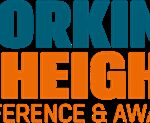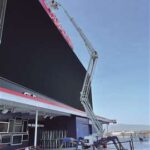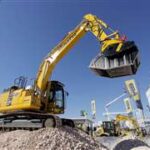Buying or renting a boom lift is a big deal.
You’re basically investing in a mechanical skyscraper on wheels.
But here’s the catch:
If you don’t maintain it properly, even the best boom lift will turn into a very expensive paperweight.
Maintenance isn’t optional—it’s survival.
And it’s way easier (and cheaper) than dealing with breakdowns, fines, or downtime disasters.
Let’s dive in.
🔍 Why Boom Lift Maintenance Actually Matters
-
Safety first: Faulty brakes, stuck joysticks, and leaky hydraulics aren’t just annoying—they’re life-threatening.
-
Save your wallet: Fixing small problems early costs peanuts compared to full system overhauls.
-
Resale value: Well-maintained lifts sell for thousands more than neglected ones.
-
Stay compliant: OSHA and local safety agencies love to check maintenance logs.
Skipping maintenance is like skipping dentist visits.
It’s all good… until it really, really isn’t.
📅 The Basic Boom Lift Maintenance Schedule
| Frequency | What To Do |
|---|---|
| Daily | Visual inspection + function test |
| Weekly | Battery checks, tire condition, hydraulic level |
| Monthly | Full system inspection (mechanical, electric) |
| Annually | Certified technician inspection + load test |
Consistency is your friend.
Boom lifts are tough—but even tanks need TLC.
🧹 Daily Checklist (5 Minutes That Can Save Your Life)
Before you even think about turning the key:
✅ Walk-around visual check
✅ Inspect tires (inflation, wear, cracks)
✅ Check hydraulic hoses for leaks
✅ Inspect cables and wiring for damage
✅ Test platform controls (every function)
✅ Test tilt alarms and emergency stop
✅ Check for loose bolts, pins, or weld cracks
If anything looks off—stop and fix it now, not later.
🔋 Battery Care Tips (If You’re Running Electric)
Batteries = the heart of an electric boom lift.
-
Charge fully overnight, not just “a little bit” between shifts.
-
Use proper water levels for lead-acid batteries.
-
Clean terminals (no one likes corrosion parties).
-
Don’t run batteries dead—it shortens lifespan.
A healthy battery = longer workdays and fewer angry phone calls from supervisors.
🛢️ Hydraulic System: No Leaks, No Excuses
Boom lifts rely heavily on hydraulics to:
-
Extend booms
-
Steer wheels
-
Move platforms
Leaks = performance loss + safety risks.
-
Check fluid levels weekly.
-
Inspect cylinders and fittings.
-
Top off with manufacturer-approved hydraulic oil only.
Catch leaks early, and you’ll save your boom (and your reputation).
⚙️ Tires and Wheels: The Unsung Heroes
Those chunky tires do more than look cool:
-
They stabilize your entire operation.
-
They absorb shock from uneven surfaces.
-
They keep you from getting stuck in mud, gravel, or construction debris.
Check:
-
Tread wear
-
Air pressure (for pneumatic tires)
-
Signs of dry rot or sidewall damage
Driving on bad tires is like ice skating with cracked blades.
Not smart.
📚 Record Everything (OSHA Will Thank You)
Keep a maintenance logbook:
-
Daily inspections
-
Repairs made
-
Parts replaced
-
Annual certification reports
In case of audits, accidents, or resale—you’ll look like a rockstar.
No logbook = no proof = big trouble.
🧠 Pro Tips for Long-Term Care
-
Store lifts indoors or under cover when possible.
-
Keep electronic parts dry—water kills wiring.
-
Schedule preventive maintenance even if the machine “feels fine.”
-
Train operators to report small issues early.
Treat your boom lift like an athlete:
Train it, check it, and it’ll perform for years.
🏁 Final Thoughts
Boom lift maintenance isn’t just about nuts and bolts.
It’s about protecting lives, protecting investments, and protecting your business reputation.
Neglect it, and you’ll pay—one way or another.
Stay on top of it, and your lift will stay on top of the world.
Keep it up. Literally.




